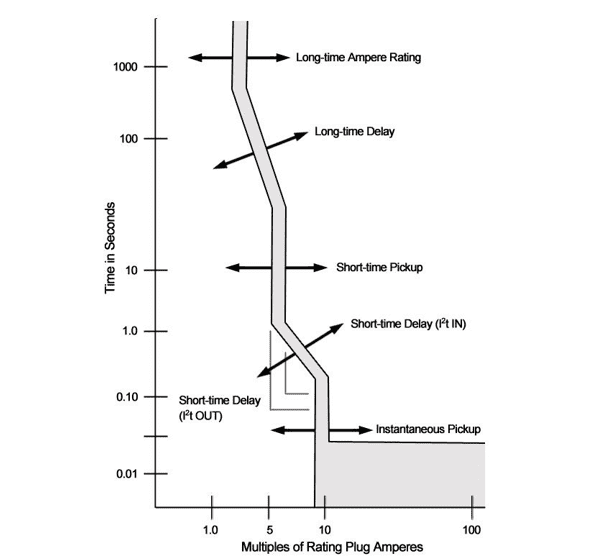News & Events
Understanding Trip Functions of Circuit Breakers
05 Jan 2023
Low voltage,
Training & Events
When selecting a circuit breaker, there are various trip functions available to protect against different types of overload events.
Thermal/Magnetic Breakers
Many circuit breakers rated for lower currents (less than 250A) use a thermal/magnetic mechanical trip mechanism.
- Thermal – Protects against overload conditions. In other words, if the current draw of a circuit exceeds the rated current for a period of time the thermal mechanism will trip the breaker. This function works on an inverse time principle. In other words, the higher the overload current, the faster the breaker will trip.
- Magnetic – Protects against short circuit conditions. If a circuit is shorted to ground, the magnetic field created by the resulting current spike will cause the magnetic mechanism to trip the breaker in less than 1/10th of a second.
**Electronic Breakers **
Higher current circuits, and circuits supplying critical loads, use electronic trip units. These trip units are available with several trip functions. These trip functions may be fixed or adjustable. Time delay adjustments for these trip functions are also available on many electronic breakers.
- (L) Long Time – Overload protection, analogous to the thermal function of a thermal/magnetic breaker.
- (S) Short Time – Short circuit protection for low level vaults. IE: partial short circuit. This function is usually triggered in less than 10 seconds.
- (I) Instantaneous – Short circuit protection, analogous to the magnetic function of a thermal/magnetic breaker.
- (G) Ground Fault – Equipment ground fault protection. This function, unlike the others listed above, is primarily concerned with protecting personnel from electric shock, rather than protecting wires and equipment from overload.

